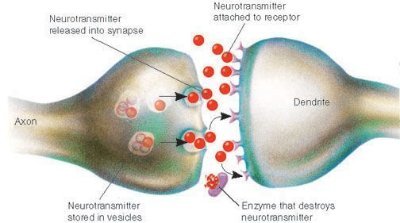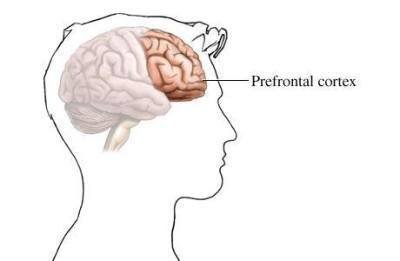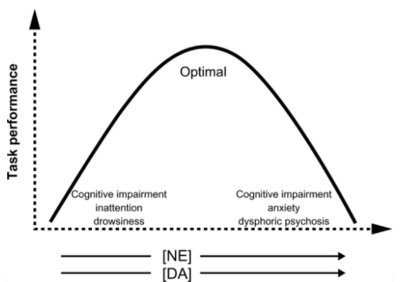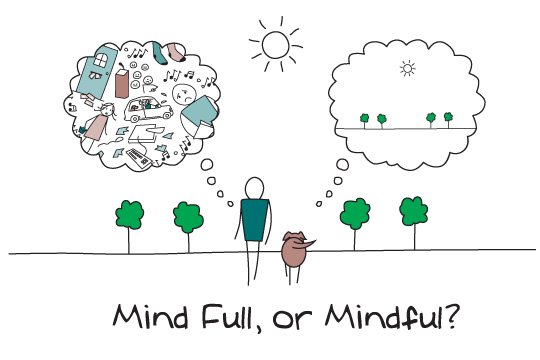Developments in neuroscience are gradually uncovering brain states related to high performance and what cultivates this. This approach also helps identify business practices that create sub-optimal work environments with detrimental impacts on decision making, communication, innovation and team working.
How workplaces create less focused workplaces
The myth of multi-tasking
Multi-tasking at work is all the rage at the moment. Unfortunately, we don’t multi-task we ‘task switch’. We may task switch quickly, very quickly in fact, but in terms of our brain. As a Harvard study on multitasking shows, You Can’t Multitask, So Stop Trying.
"It turns out multi-taskers are terrible at every aspect of multitasking. They're terrible at ignoring irrelevant information; they're terrible at keeping information in their head nicely and neatly organised; and they're terrible at switching from one task to another... worse at analytic reasoning... we worry that it may be creating people who are unable to think well and clearly” Dr Nass Digital nation life on the virtual frontier PBS Feb 2010
Constant attention switching impairs memory, exponentially increases errors and cultivates a very agitated in-attentive state of mind. It also negatively impacts executive function which is crucial for decision making, team working, planning and prioritizing.
Multi-tasking leads to what Linda Stone (former apple executive) calls “continuous partial attention”.We never bring our full resources to anything before we switch over to something else. This rapid switching also causes an increasing stress response in the body.
Information overload
From twitter, to facebook, from email to mobile phones and this is even before you include 24-hour news channels, IM chats and general conversations with others. Information overload creates a threat response in the brain reducing the very resources we need to respond well.
Our workplaces and homes are now inundated with information.
“A typical information worker who sits at a computer all day turns to his e-mail program more than fifty times and uses instant messaging seventy-seven times per day” Matt Richtel, New York Times
“...the average knowledge worker loses approximately 25 to 30 percent of the day due to Information Overload, including unnecessary interruptions and recovery time” Spira, Jonathan B. Overload! How Too Much Information is Hazardous to your Organisation
Hyper-Kinetic Work Environments
Relentless pressure, constant information flows and always-on’ technologies lead to what Harvard Business Review is calling ‘Hyper Kinetic Work Environments: Why smart people underperform’. We seem to be creating shorter and shorter attention spans, being less and less attentive which leads to something called an Attention Deficit Trait (ADT).
People are preoccupied, anxious, constantly thinking of what is to be done next. These environments cause even smart people’s brains to unconsciously become less and less attentive, more hurried and hassled. This has consequential impacts including increased ‘black and white’ rather than complex thinking, difficulty staying organised, managing time, setting priorities and staying on task.
“The relentless influx of emails, cellphone calls and instant messages received by modern workers can reduce their IQ by more than smoking marijuana” Will Knight, New Scientist
The seduction of distraction
The brain prioritises new events in its environment (think of the attraction of an email or IM flash), this produces a burst of a neurotransmitter called dopamine, a feeling of novelty occurs which drags our attention to the change. Dopamine while ‘feeling good’ also acts like a ‘give me more’ neurotransmitter a need to consistently check.
New information streams leads to an epidemic of addictive workplace practices, including constant email, IM and smart phone checking. A constant background anxiety, a nag that you're missing something.Perhaps you already see this in your workplace and during meetings?
Constant checking of phones or people being physically but not mentally present. This obviously leads to increased communication errors and sub-optimal meetings.
The cost of losing focus
One study found “that employees spent an average of 11 minutes on a project before being distracted (and) after an interruption….. (taking) 25 minutes to return to the original task, if they do at all” Your Brain at Work, David Rock
In addition, a recent Harvard study by Killingsworth and Daniel Gilbert also found that people’s minds wandered 47 per cent of the time during an average day and that this wandering leads to increasing unhappiness.
"In conclusion, a human mind is a wandering mind, and a wandering mind is an unhappy mind. The ability to think about what is not happening is a cognitive achievement that comes at an emotional cost"
I would say it's not only an unhappy mind its a vulnerable one too. Even if we are trying to get some substantive happiness from our imagination – it’s still only happiness on an imaginary level. It’s very different from the happiness or fulfilment in engagement with the life we are actually living.
Secondly, what’s the mind doing when it is not paying attention? Often it slips off into worry, or rumination or unconstructive patterns of thought.
So it’s a lose/lose situation. We don’t bring all of our resources because we constantly distracted, which increases mind wandering - driven by a lack of applied attention and all this actually causes us unhappiness.
It becomes clear that managing attention, arousal and distraction levels is critical to working and being well.
So we have business practices that create sub-optimal work environments with detrimental impacts on decision making, communication, innovation and team working. Its a lose/lose situation for us and our workplace. It becomes clear that managing attention, arousal and distraction levels is critical to working and being well.
So how can we improve focus?
Plasticity of the brain

The brain changes its structure and function in relationship to experience – something called 'plasticity of the brain'. Plasticity of the brain occurs in response to external events and the inner landscape of our minds – our thoughts and emotions.
The latter point is an interesting one to reflect on.For example, the same brain changes occur in individuals who learn to play a 4 key tune on a piano, compared to those who just imagine they learn to play this same tune – a purely mental event.
This is worth repeating. Mentally rehearsing an activity causes the same brain changes as doing an activity.So directing our attention, or cultivating qualities of the mind acts back on the brain itself causing it to rewire. Sometimes this process is referred to as self directed neuroplasticity.
Just like we can slowly increase our fitness, mental workouts can alter our own unique mix of emotional styles and improve our ability to concentrate.
We can exercise choice to work with our mind, transform unhelpful habits like a lack of focus knowing that this process causes the brain to change its structure. Aspects we once considered as fixed traits, things like resilience, focus, positive outlook, empathy or even happiness are consequently skills that can be developed, learnt and improved.
How the brain communicates with itself
The brain itself takes a lot of energy to function well. It uses 20% of all the glucose and oxygen that the body needs even though it's only 1-2 Ibs in weight. That's one reason concentration fades as we run out of energy. The brain includes tiny switches called neurons which fire like spark plugs in a car.
There’s about 100 billion of them at the last best count. Each individual neuron is directly connected to approximately 5,000 others – like having 5,000 other neurons on speed dial. Every neuron is only ever a few hops away from any other neuron in the whole brain.
So how do neurons speed dial and therefore communicate with each other and why is this important in terms of how well we focus?
Imagine a couple of islands separated by some water. Each island has its own stranded inhabitant who communicates with the other islander by placing messenger bottles in the water and waiting for them to wash up on the other island. In a similar way the neurons ‘talk’ to each other by sending little packets of chemical ‘bottles’ across tiny gaps that separate them from their neighbours. These chemicals either encourage or discourage neighbouring neurons to fire.
The fancy name for these chemical bottles is a neurotransmitter and the gap or body of water is called a synapse.

Understanding what happens when we have too much or too little of these chemical bottles provides a big insight in how retraining attention and regulating emotions is crucial to focus, being well at work and working effectively in teams.
A crucial part of the brain for focus

Just behind the forehead is where our thoughts are drawn and erased – it’s called the pre-frontal cortex (PFC). It’s responsible for many crucial things we need in the modern workplace.
- Decision making
- Prioritising
- Communication
- Planning
- Goal setting
- Solving problems
- Creativity
- Inhibiting impulses
Unfortunately, this area is extremely sensitive to two main messenger bottles, two neurotransmitters dopamine and norepinephrine. Too few or too many of certain types of bottles and this area decreases in performance or even closes down. The relationship between these chemical bottles and its performance is so connected that you can see the effect in a simple diagram.

Neuroscientist Patricia Goldman-Rakic found that if dopamine and norepinephrine is removed it was as though this part of the brain is physically cut out. On the very left side of the picture, as we are fatigued, tired, disinterested or bored, we have a lack of dopamine and norepinephrine.
In the opposite direction, too many of these neuro-chemicals (moving to the far right side of the picture) and the connections become dysfunctional, networks start disconnecting and firing shuts down altogether, you're frazzled, unable to focus and are easily distracted.
This is what happens when we are chronically stressed or in moments of intense threat when massive amounts of norepinephrine and dopamine are released. In each case at either end we have a PFC shut-down. The area we need to work well to perform at work turns off. As we move towards the left or right of the mid point we start to lose focus.
A Goldilocks zone
We can see, however, there is an optimum level at the peak of the curve. We need just the right amount of stress (eustress) and arousal – this is the middle of the picture, the top of the curve. And here is our optimal focus.Relaxed, alert and focused.
In the zone.
In general, norepinephrine strengthens the circuits related to what we want to be alert or pay attention to.Dopamine keeps out distraction, it increases when we feel motivated, open minded and curious, consequently guiding where we keep our focus.
It's triggered by novelty and interest.So, for optimal performance we need a balance of alertness (norepinephrine) and interest (dopamine) whilst we are relaxed.Alert, present and relaxed. Mindful, aware and spacious.
This is developed by mindfulness techniques which can be integrated into daily life and intense work environments.
Mindfulness
Mindfulness is a research-proven technique that boosts your performance by physically altering your brain through this process of self directed neuroplasticity. By retraining attention through practising and integrating mindfulness and empathy we become increasingly present, un-distracted to the tasks, present to ourselves, each other and the world at hand.
 A team of scientists from the University of British Columbia and the Chemnitz University of Technology were able to pool data from more than 20 studies to determine which areas of the brain are developed by mindfulness.
A team of scientists from the University of British Columbia and the Chemnitz University of Technology were able to pool data from more than 20 studies to determine which areas of the brain are developed by mindfulness.
- The anterior cingulate cortex (ACC), located deep inside the forehead. This area enables you to resist distractions, to direct attention and focus, and to avoid impulsivity. The ACC is also responsible for being able to learn from past experiences for optimal decision making and to be able to switch strategies. It seems to be a particularly important area in the face of fast-changing conditions and areas of high uncertainty.
- The hippocampus, which is related to emotion and memory is an area that is particularly damaged by chronic stress and supported through mindfulness training.
And Professor Davidson's Emotion Life of your brain book highlights different types of mindfulness and meditation that improve resilience, positive outlook, reading social cues,self awareness and responding appropriately to context.
Mindfulness, empathy and compassion activate the body’s relaxation response, reducing the amount of these dopamine and neuropinephrine neurotransmitters – moving us from right to the left of the performance curve.
But equally as the techniques involve a mindful, wakeful, curious, undistracted view of the present – it moves us from left to right of the performance curve so we hit its peak and enter flow. As we train in techniques that develop focus and empathy it causes the brains plasticity to change its structure and function so that maintaining focus becomes easier and easier to master.
Focus gets recognised and developed for what it is, a skill. As our mind wanders less we become happier, and as we become more focused we are less likely to multi-task and be overcome with information overload. We are alert yet relaxed, spaciously present to our tasks, work team and environment.
This is the sweet spot for this area of the brain and the sweet spot for working well.
Hi! I am a content-detection robot. This post is to help manual curators; I have NOT flagged you.
Here is similar content:
https://www.changeinsight.org/if-you-suffer-from-a-lack-of-concentration-or-trouble-focusing-here-is-what-you-can-do/
Downvoting a post can decrease pending rewards and make it less visible. Common reasons:
Submit
I am also the original author of the above article
Downvoting a post can decrease pending rewards and make it less visible. Common reasons:
Submit
Very interesting post!
Downvoting a post can decrease pending rewards and make it less visible. Common reasons:
Submit
Thank you Smashalee
Downvoting a post can decrease pending rewards and make it less visible. Common reasons:
Submit